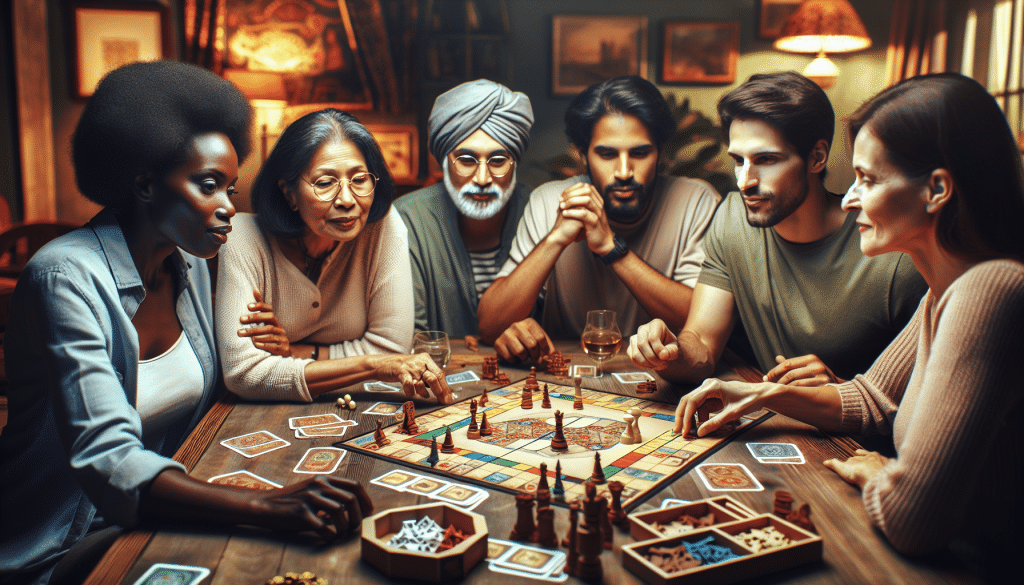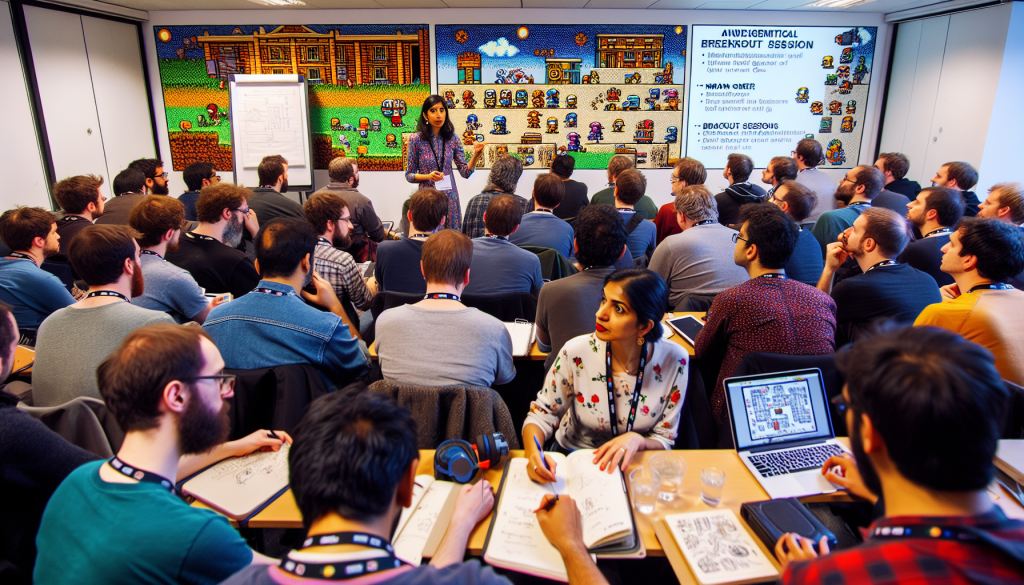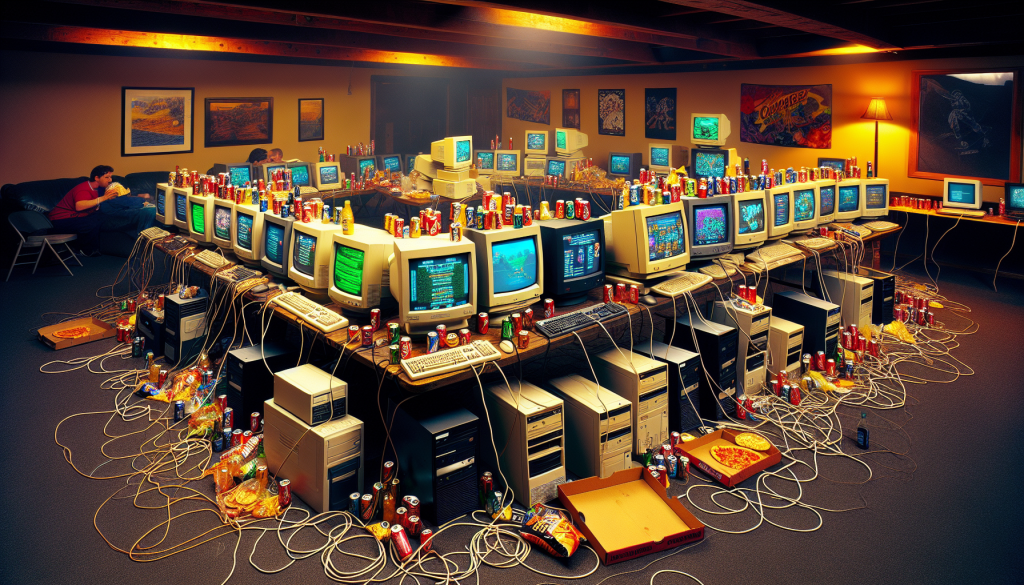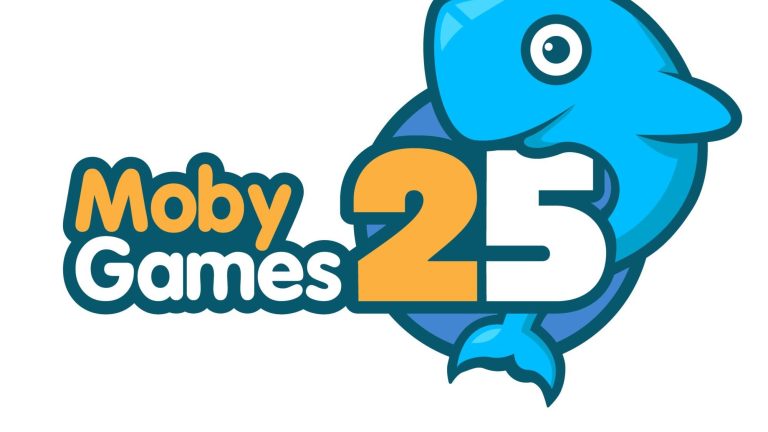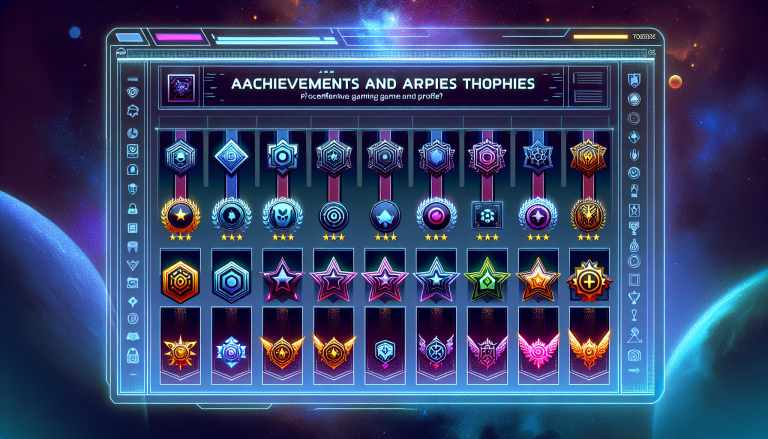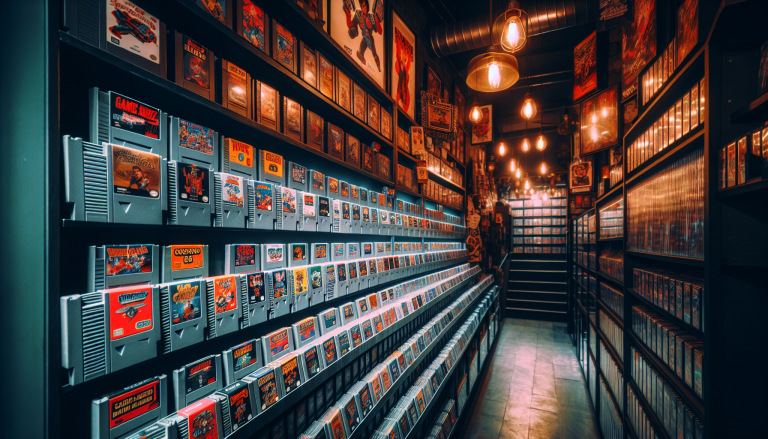The Resurgence of Retro Gaming in Esports
Ah, the good old days of gaming. The pixelated graphics, the simple yet addictive gameplay, and the endless hours spent trying to beat that one level – there’s something about retro games that brings back a flood of nostalgia. And it seems that this nostalgic wave is making its way into the world of esports. Retro gaming, defined as playing and competing in classic video games from the 70s, 80s, and 90s, has seen a resurgence in recent years. While modern esports titles like League of Legends and Overwatch dominate the scene, there’s a growing interest in revisiting the games of yesteryear. And this isn’t just for casual gaming – retro gaming has found its place in competitive esports tournaments as well. One of the driving forces behind the resurgence of retro gaming in esports is the power of nostalgia. Many gamers who grew up playing these classic titles have fond memories attached to them. Whether it’s the feeling of nostalgia for a simpler time or the excitement of reliving their childhood, these sentiments fuel a desire to experience these games in a competitive setting. But it’s not just about personal nostalgia – retro games have a certain charm that can captivate even those who didn’t grow up with them. The simplicity of the gameplay mechanics and the iconic characters and worlds make these games accessible and enjoyable for new and old gamers alike. So, it’s no wonder that esports tournaments are starting to include classic games in their lineups. The influence of classic games on esports tournaments is undeniable. Major events like Evo, the largest fighting game tournament in the world, often feature classic titles like Street Fighter II and Super Smash Bros. Melee alongside newer games. These classics have a dedicated fanbase that continues to compete at a high level, showcasing their skill and passion for these timeless games. But it’s not just the established esports community that is embracing retro gaming. Many up-and-coming tournaments are specifically focused on classic games, creating new opportunities for players to showcase their skills. These tournaments bring together a diverse range of players, from seasoned veterans to newcomers who are just discovering the joys of retro gaming. So, what does the future hold for retro gaming in esports? Well, it seems that the integration of classic games is only going to grow stronger. As more players and fans embrace the nostalgia and challenge of these games, organizers will continue to include them in their tournaments. This opens up new avenues for competition and creates a vibrant and diverse esports scene. If you’re a fan of classic games and want to get involved in the retro gaming esports community, there are a few things you can do. First, familiarize yourself with the classic titles that are popular in competitive play. Whether it’s Super Mario Bros., Pac-Man, or Street Fighter II, understanding the mechanics and strategies of these games is essential. Another way to get involved is to join online communities and forums dedicated to retro gaming. These spaces are a great way to connect with like-minded individuals, learn from experienced players, and stay updated on upcoming tournaments and events. And finally, practice, practice, practice. Just like any other esports discipline, retro gaming requires skill and dedication. Take the time to master the mechanics, learn from your mistakes, and keep pushing yourself to improve. With enough time and effort, you might find yourself competing at the highest level in retro gaming esports. So, whether you’re a seasoned veteran of classic games or a newcomer looking to explore the world of retro gaming, there’s no denying the resurgence of these timeless titles in esports. Nostalgia, accessibility, and the love for these games are driving forces behind their presence in competitive tournaments. So grab your joystick, blow into your cartridges, and get ready to experience the thrill of retro gaming in the world of esports.Nostalgia as a Driving Force in Competitive Gaming
When it comes to competitive gaming, there is no denying the power of nostalgia. Nostalgia has the remarkable ability to transport us back to a simpler time, evoking warm and fuzzy feelings of fond memories. And in the world of esports, this powerful emotion is becoming an increasingly influential force.
For many gamers, the desire to relive the games of their youth is a strong motivator. They yearn to experience the magic of classic titles that defined their gaming journeys. And this yearning has not gone unnoticed by esports tournament organizers.
The Appeal of Classic Games
Classic games have a timeless appeal. They were often groundbreaking in their time, pushing the boundaries of what was possible in the gaming industry. Whether it was the iconic platforming of Super Mario Bros., the challenging puzzles of The Legend of Zelda, or the fast-paced action of Street Fighter II, these games left a lasting impression on a generation of gamers.
Today, these games are being reintroduced to a new audience through esports tournaments. Through the power of modern technology, classic games are being given a new lease on life, with updated graphics and online multiplayer capabilities. This allows both veteran players and newcomers to experience the thrill of competing in these beloved titles.
The Integration of Classic Games in Esports Tournaments
Esports tournaments are increasingly featuring classic games in their lineups. From dedicated tournaments solely focused on retro gaming to the inclusion of classic titles in larger esports events, these games are once again taking center stage.
One of the reasons for this resurgence is the accessibility of classic games. Unlike some modern titles that require expensive gaming rigs or the latest consoles, classic games can be played on a variety of platforms, including retro consoles, emulators, and even smartphones. This opens the door for a wider range of players to compete and enjoy these games.
Another factor driving the integration of retro gaming in esports is the desire to celebrate gaming history. These classic titles paved the way for the industry we know today, and by showcasing them in esports tournaments, organizers are paying homage to the roots of gaming.
The Future of Retro Gaming in Esports
The future prospects for retro gaming in esports are bright. As more and more players discover the joy of competing in classic titles, the demand for retro esports tournaments is expected to grow. This opens up opportunities for players to pursue careers in retro gaming, whether it be as professional players, content creators, or event organizers.
Additionally, the integration of classic games in esports can serve as a valuable learning experience for aspiring gamers. By studying the strategies and gameplay of legendary players in these timeless titles, new generations can gain valuable insights into the fundamentals of competitive gaming.
As the saying goes, “Those who do not learn from history are doomed to repeat it.” By embracing retro gaming in esports, we can learn from the past while celebrating the present and future of competitive gaming.
The Influence of Classic Games on Esports Tournaments
Gaming has come a long way since its inception, with technology constantly advancing and gamers being introduced to new and exciting experiences. However, amidst all the modern innovations, there is a special place in the hearts of many for the classic games that started it all. These retro games not only hold a nostalgic value but also continue to have a significant influence on esports tournaments today.
One of the main reasons why classic games still hold sway in the world of esports is the familiarity they bring. These games have been enjoyed by generations, and many players have developed a deep understanding and love for them. When these games are featured in esports tournaments, it creates a feeling of nostalgia and excitement among both players and spectators.
Take, for instance, the iconic game “Super Smash Bros. Melee,” which was released in 2001. Despite being almost two decades old, it has remained a staple in many esports tournaments. The game’s timeless mechanics and beloved characters like Mario, Pikachu, and Link have created a dedicated fan base that continues to play and support the game in competitive settings.
Another way classic games influence esports tournaments is through their influence on modern game design. Many of the mechanics and gameplay elements found in today’s popular esports titles can be traced back to classic games. For example, the concept of power-ups and special abilities, which are common in games like “League of Legends” and “Overwatch,” can be attributed to the influence of classics like “Super Mario Bros.” and “Street Fighter.”
Furthermore, the retro gaming community has been instrumental in keeping these classic games alive in the esports scene. Through grassroots events and online communities, retro gamers have been able to showcase their skills and passion for these games. This has allowed classic games to maintain a presence in esports tournaments and has even led to the organization of dedicated retro gaming competitions.
However, it is important to note that the integration of classic games into esports tournaments does not come without its challenges. One of the main obstacles is the limited availability of the original hardware and software required to play these games. As technology has advanced, many old consoles and cartridges have become obsolete, making it difficult for players to access and compete in these games.
To overcome this challenge, organizers have turned to emulation and remastered versions of classic games. Emulation allows players to experience the original gameplay on modern systems, while remastered versions offer updated graphics and additional features. These solutions have helped bridge the gap between the old and the new, making classic games more accessible to a wider audience.
The future prospects for the integration of retro gaming in esports look promising. As the gaming industry continues to evolve, there will always be a demand for the classics that started it all. Developers and organizers are recognizing the value of these games and are working towards preserving and promoting them in the esports landscape.
In conclusion, classic games hold a significant influence on esports tournaments. Their familiarity, impact on modern game design, and support from the retro gaming community make them a valuable addition to the competitive gaming scene. While there may be challenges in accessing and playing these games, the industry is finding ways to bridge the gap and ensure their continued presence in the world of esports.
Future Prospects and Integration of Retro Gaming in Esports
In recent years, we have witnessed a remarkable resurgence of retro gaming in the world of esports. What was once considered a nostalgic pastime has now become a competitive arena for gamers of all ages. The allure of classic games and their ability to evoke feelings of nostalgia has been a driving force behind this phenomenon. As we look to the future, it is clear that retro gaming will continue to play a significant role in the ever-evolving world of esports.
One of the main reasons why retro gaming has found a place in the world of esports is the strong sense of nostalgia it evokes. Many gamers who grew up playing classic titles such as Super Mario Bros., Pac-Man, and Tetris have a deep emotional attachment to these games. They bring back memories of childhood, simpler times, and hours spent in front of a screen with friends or family. This nostalgia factor creates a unique appeal for both players and spectators, making retro gaming tournaments a nostalgic trip down memory lane.
Moreover, classic games have had a profound influence on the development of esports tournaments. From the mechanics and gameplay elements to the strategies and skill sets required, many modern esports owe their foundation to the classics. For example, the fast-paced action of games like Street Fighter II has paved the way for the rise of fighting game tournaments, while the precision and timing required in games like Super Mario Bros. have influenced platforming competitions.
As retro gaming continues to grow in popularity, we can expect to see even more integration of classic titles in esports events. Organizers are recognizing the timeless appeal of these games, and they are incorporating them into their tournaments to attract a wider audience and tap into the nostalgia factor. This integration not only adds variety to the esports landscape but also provides an opportunity for new and seasoned players to test their skills in a different gaming environment.
Looking ahead, it is important for esports enthusiasts and organizers to embrace the integration of retro gaming while also staying open to innovation and evolution. By combining the best of both worlds, we can create a vibrant esports scene that caters to the diverse interests and preferences of gamers. Whether it’s a classic arcade game or a modern multiplayer title, there is room for all types of gaming experiences in the realm of esports.
In conclusion, the resurgence of retro gaming in esports is a testament to the enduring appeal of classic titles and the power of nostalgia. As we move forward, it is crucial to embrace the integration of retro gaming in esports tournaments while also fostering innovation and adaptation. By doing so, we can create an inclusive and exciting esports scene that combines the best of old and new. So, grab your controllers and get ready to embark on a nostalgic gaming journey in the world of esports!

